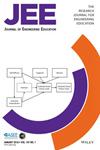Exploring epistemic aspects of engineering for K–12 science and engineering education
Abstract
Background
Since the advent of the Next Generation Science Standards (NGSS), there has been an increasing focus on engineering in K–12 education. As educators and researchers have gained a better understanding of the nature of engineering in the decade following the release of the NGSS, there are new opportunities for growth and complexity.
Purpose
This study used an epistemological approach to seek insights from experts in the science and engineering communities about the prominent aspects of engineering for K–12 education.
Design/Method
This mixed-methods study employed a three-round Delphi study and a focus group meeting to elicit experts' opinions on the epistemic aspects of engineering that could shed light on the nature of engineering knowledge and practices. Constructivist grounded theory methodology was used to identify preliminary themes concerning the epistemic aspects of engineering and then to develop main themes by combining relevant themes together.
Results
The analysis process yielded 21 preliminary themes that reflect key ideas about the engineering knowledge base, engineering design activities, and values and norms of the engineering community. Additionally, the current study identified eight main themes that captured the broader patterns in the data.
Conclusions
The outcome of this study, including the preliminary themes and main themes concerning the epistemic aspects of engineering, could serve as a conceptual tool for establishing and improving students' conceptions of engineering and as a guide for designing and implementing engineering design activities in K–12 education settings.

 求助内容:
求助内容: 应助结果提醒方式:
应助结果提醒方式:


